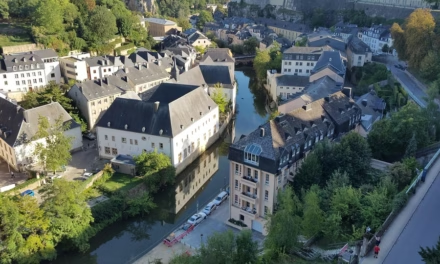Discover Mali: Hidden Gems and Must-Visit Destinations in West Africa
When you think of West Africa, your mind might immediately wander to Senegal’s beautiful coastline or Ghana’s cultural richness. However, have you considered Mali? Often overshadowed by its more frequently visited neighbours, Mali is bursting with history, cultural wealth, breathtaking landscapes, and unique experiences. If you’re an intrepid traveller looking for an authentic West African adventure, Mali deserves a top spot on your ultimate travel list.
Mali is a kaleidoscope of vibrant traditions, ancient architecture, and stunning desert views. From the legendary city of Timbuktu to the bustling streets of Bamako, this country is filled with hidden gems waiting to be uncovered. Ready to discover Mali? Let’s dive into this comprehensive guide on the best of what this fascinating West African destination has to offer.
Why Choose Mali for Your Next Adventure?
Beneath the veneer of dusty deserts and Sahel landscapes lies a historic land known as the cradle of the Mande civilisation, which gave rise to powerful empires like the Mali and Songhai. With a rich heritage of music, art, and storytelling, Mali is a cultural treasure trove. Whether you’re seeking an off-the-beaten-path adventure or a deeper dive into African heritage, Mali delivers unparalleled experiences.
Moreover, Mali’s charm lies in its authenticity. Unlike highly commercialised destinations, its attractions remain grounded in culture and tradition. Travelling through Mali feels like stepping into a living museum, where history blends seamlessly with the pace of modern life.
A Glimpse into Mali’s Historical Significance
Before we explore Mali’s hidden gems and must-visit destinations, it’s worth understanding its immense historical significance. Did you know that Mali was once one of the wealthiest places in the world? The Mali Empire, under the famous ruler Mansa Musa during the 14th century, was a centre for trade, culture, and education. Timbuktu, for instance, became synonymous with grandeur, scholarship, and the lucrative trans-Saharan gold trade.
Modern Mali keeps much of that spirit alive through its UNESCO World Heritage Sites, such as the Great Mosque of Djenné and the Tomb of Askia. These landmarks are more than just beautiful—they’re windows into Mali’s glorious past.
Top Must-Visit Destinations and Hidden Gems in Mali
So, where should you begin when discovering Mali? Here’s a curated list of destinations you simply cannot miss:
1. Bamako – The Heartbeat of Modern Mali
As Mali’s capital, Bamako is more than just a gateway to the country—it’s a vibrant city teeming with life, music, and culture. The name Bamako, meaning “crocodile tail” in the Bambara language, reflects the city’s connection to the Niger River.
- Key Attractions in Bamako:
- National Museum of Mali: This museum is a must for anyone interested in anthropology, featuring fascinating artefacts and textiles that showcase Mali’s rich cultural tapestry.
- Bamako Grand Market: A sensory overload, this bustling market is perfect for exploring local crafts, fabrics, and fresh produce.
- Niger River Sunset Tours: Take a relaxing boat ride down the Niger River to enjoy a stunning Malian sunset.
2. Timbuktu – The Legendary City of Gold
Few places evoke as much intrigue as Timbuktu. Known for its golden legacy and intellectual history, Timbuktu stands proud as a hub of African scholarship during the Middle Ages. Today, the city offers a glimpse of a bygone era.
- Must-visit spots in Timbuktu:
- Sankoré University and Mosque: Once the seat of Islamic learning, this architectural wonder should not be missed.
- Manuscripts of Timbuktu: Discover ancient books and manuscripts carefully preserved, offering insight into education during the empire’s height.
Pro Tip: Make sure you travel with an experienced guide since Timbuktu’s surrounding areas may require careful navigation for safety reasons.
3. Djenné – The Pearl of Mali
A visit to Mali is incomplete without seeing Djenné, the site of the world’s largest mud-brick structure, the Great Mosque of Djenné. This UNESCO World Heritage Site is a masterpiece of Sahelian architecture and is at the centre of weekly market life.
- Things to experience in Djenné:
- Witness the Grand Marché held on Mondays, a lively marketplace full of vibrant colours and local produce.
- Take a guided tour to learn more about the Great Mosque’s construction and history.
4. The Bandiagara Escarpment – Mystical Land of the Dogon People
Stretching over 150 kilometres, this dramatic sandstone cliff edge is home to the Dogon people, famed for their rich cultural and spiritual traditions. The Bandiagara Escarpment is not only visually remarkable but also deeply spiritual, with ancient villages clinging to the cliffs.
- Don’t miss:
- A trek through the escarpment to see Dogon cliff dwellings up close.
- Observing a traditional Dogon dance ceremony, noted for its vibrant masks and connecting deeply with ancestral spirits.
5. Segou – Mali’s Riverfront Beauty
Segou is known for its serene aura and iconic views along the Niger River. Once an important colonial administrative town, its old-world charm still lingers.
- Spend a day exploring:
- The riverside colonial quarters.
- Local pottery studios, where you can observe artisans creating intricate designs.
- The Festival sur le Niger, one of Mali’s most iconic music festivals held annually.
6. Gao and the Tomb of Askia
Located in the north, Gao was once the capital of the Songhai Empire. Here, Mali’s history comes alive, particularly at the Tomb of Askia, another World Heritage Site. This pyramid-shaped structure dates back to the 15th century and is a testament to Gao’s historical significance.
Best Time to Visit Mali
Planning your trip during the dry season (November to February) ensures a more enjoyable experience. Temperatures are milder, and travelling between destinations is significantly easier. Keep in mind that some areas may have restricted access depending on current safety advisories, so always check travel recommendations before your visit.
Tips for Travelling in Mali
- Cultural Sensitivity: Mali is deeply rooted in tradition, so respect the local culture, particularly in dress and behaviour.
- Learn Basic French/Bambara: Knowing a few phrases can make a big difference, as French is the official language, and Bambara is widely spoken.
- Travel With Guides: Several destinations, especially in the north, are best explored with a registered guide or reputable travel agency, such as Nihosi Travels & Tours, to ensure a safe and enriching experience.
Experience the Vibrance of Malian Music
Mali is synonymous with music, the backbone of its rich cultural heritage. Musicians like Ali Farka Touré and Salif Keita have made Mali a global icon in the world of blues and world music. Time your visit around festivals such as the Festival au Désert, held in or near Timbuktu, for a truly magical musical experience.
FAQs: All You Need to Know About Travelling in Mali
Here’s a quick FAQ to answer your pressing concerns.
-
Is Mali safe for tourists?
Parts of Mali have been affected by security issues, particularly in the north. It is crucial to follow updated travel advisories and stick to guided tours. -
What currency does Mali use?
Mali uses the CFA franc. Be sure to carry cash, especially in rural areas. - Are vaccinations required?
Yes, yellow fever vaccination is mandatory. It’s also advisable to take precautions for malaria and other tropical diseases.
Mali might not yet be on every traveller’s radar, but it is a country that rewards those who venture outside the typical tourist path. From awe-inspiring architecture to soulful music and warm hospitality, Mali is a destination steeped in culture, history, and natural beauty. So, why not start planning your trip today?
For a seamless travel experience, consider booking your journey with Nihosi Travels & Tours. Let Mali inspire you and leave you longing to return.












Subscribe To Our Newsletter
Join our mailing list to receive the latest news and updates from our team.
You have Successfully Subscribed!